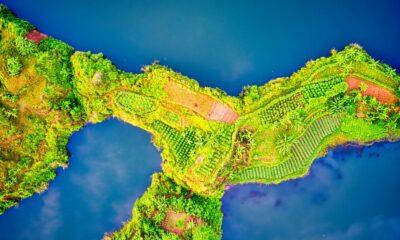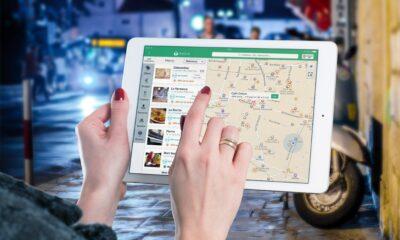In this GIS podcast we explore the many impacts of City GIS maps using the ESRI ArcGIS ecosystem for mapping and storytelling and the future of GIS technology with the creation of Digital Twins and Artificial Intelligence. We discuss the way Geographic Information Systems impact every day citizens living in urban areas and explore the qualities that make someone a great GIS analyst and describe political implications of GIS systems. Richard Tuinstra is the GIS Manager for the City of Wilmington, North Carolina. He has more than three decades of experience working with GIS from the early days before ArcGIS to the high speed dashboards and storymaps that we know and love today.
City of Wilmington NC GIS: https://wilmingtonnc.maps.arcgis.com/…
Connect with Richard on LinkedIn: https://www.linkedin.com/in/richard-t…
In recent years, the concept of digital twins has gained significant attention in various industries, including construction, manufacturing, and infrastructure. A digital twin is a virtual representation of a physical object or system that can be used to simulate and monitor real-world operations. It creates a bridge between the physical and digital worlds, providing real-time insights into operations and allowing for better decision-making.
One of the most advanced platforms for creating digital twins is ArcGIS Digital Twins, which leverages location intelligence to create virtual representations of physical objects, spaces, and systems. The platform uses data capture technology, such as lidar, drones, and IoT sensors, to collect and analyze data from the physical world. This data is then used to create a digital twin that accurately represents the physical object or system.
One of the primary benefits of ArcGIS Digital Twins is that it provides a real-time view of operations. This means that users can monitor and analyze the performance of physical objects and systems in real-time, allowing for quick identification of issues and the implementation of corrective measures. This can lead to significant cost savings and improved efficiency.
Another key benefit of ArcGIS Digital Twins is that it can be used to simulate different scenarios and test changes before they are implemented in the real world. This can help organizations identify potential issues and optimize operations before making changes in the physical world, reducing risks and costs associated with experimentation.

Overall, ArcGIS Digital Twins are a powerful tool for bridging the gap between the physical and digital worlds. By providing a virtual representation of physical objects and systems, it allows for real-time monitoring, simulation, and optimization, leading to improved efficiency and reduced costs. As data capture technology continues to advance, we can expect to see even more sophisticated digital twins that accurately represent the physical world in unprecedented detail.


Geography & GIS Education during the AI REVOLUTION & Events That Shaped Spatial Thinking FOREVER with ESRI’s Joseph Kerski, PHD


Cybersecurity and How to increase Network Security for Your Business


City GIS: Making Cities Smarter with Digital Twins and Geographic Information Systems


How to Get Started in STEM with Geographic Information Systems (GIS) Careers!


How Geographic Information Systems (GIS) Support Everyday Efficiencies


UNVEILING Intelligence: UFOs, China, and Putin’s Nuclear War w/ Keith Masback



